Vanilla Ice Cream

Image credit: MichalPL. Used under a CC 4.0 license.
I love ice cream. If you look in my refrigerator, you will see several containers of vanilla ice cream, two brands. One brand, Häagen-Dazs, lists five ingredients on the label: cream, skim milk, cane sugar, egg yolks, and vanilla extract. The other brand, Breyers, lists five also, but slightly different: milk, cream, sugar, vegetable gum (tara) and natural flavor. The only significant difference between the two lists is the inclusion of vegetable gum in the Breyers brand.

A Little Wood with Your Pancakes?
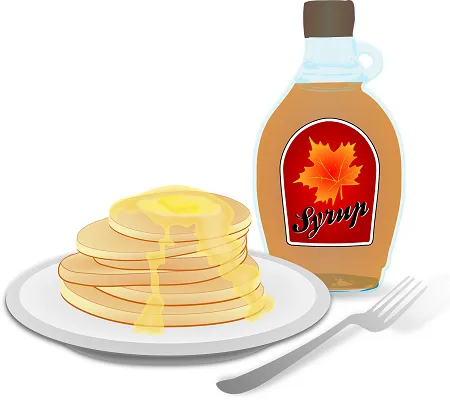
One Producer Uses Wood Cellulose in Pancakes and Syrup.
Image credit, Pixabay

Does the difference between the ice cream ingredients matter? It depends on who answers that questions. Industry representatives and regulating agencies say, no. Some researchers suggest otherwise. Non-digestible food additives have been linked to a variety of unhealthy conditions, including: intestinal distress, blockages, autoimmmune diseases, and even death.
Cellulose Gum (Carboxymethylcellulose), Common Food Additive

Image credit: LHcheM. Used under a CC 3.0 License

 Why Is There Gum in My Ice Cream?
Why Is There Gum in My Ice Cream?
Simply put, gum is cheaper to use than nutritional ingredients. Without gum, more 'solid' material would have to be added to a product in order to insure satisfactory volume for the customer. As one food industry source explains, "...excessive increase of solid material content will increase the production cost and decrease the competitive power of products in the market".
The utility of indigestible additives lies in the fact that they are indigestible. They are designed to make their way through the digestive tract without being absorbed. They are pure bulk. They take up space, not only in the food, but in the gut. They give the consumer a sense of satiety, and yet add no caloric or nutritional value.

 Absorb Water and Increase in Size
Absorb Water and Increase in Size
Because non-digestible food additives absorb water and increase in size, they offer a sense of fullness. It is for this reason they were considered in the past as ideal weight loss ingredients.
A diet pill made of guar gum, a common non-nutritive food additive, was marketed in the late 1980s. It was called Cal-Ban 3000, and promised the consumer a sense of fullness without adding calories to the diet.
Guar Seeds, From Which Guar Gum Is Made
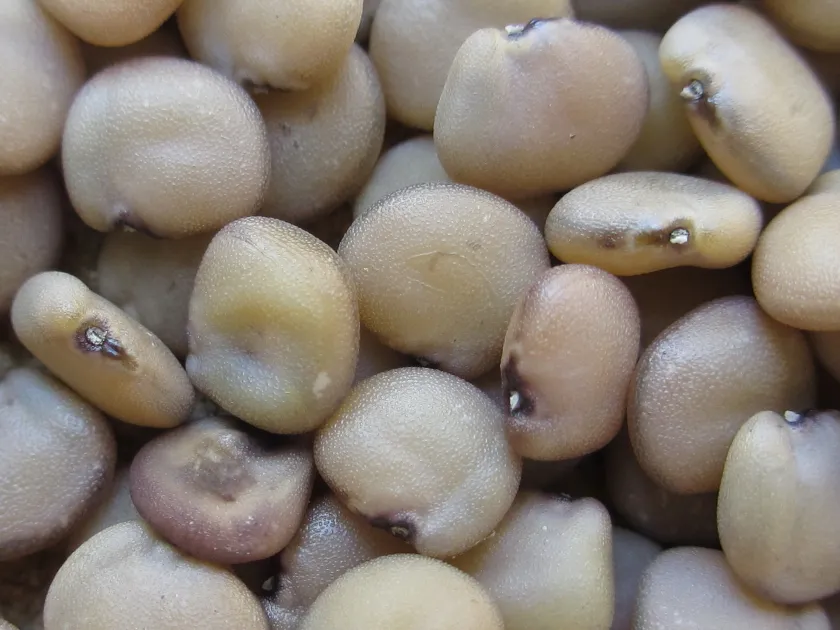
Image credit: Ton Rulkens fromMozambique. Used under a CC 2.0 license.
The consumption of Cal-Ban, according to the American Journal of Gastroenterology, resulted in many cases of esophageal and small bowl obstruction. The Journal cites cases in which all but one person affected survived surgical intervention. However, "the tenacious gel-like consistency of the material was often difficult to remove". These reported cases were "very similar to those reported in the literature."
Cal-Ban was eventually banned in countries across the world.

Associated with Necrotizing Enterocolitis in Premature Infants
Dysphagia (difficulty swallowing) is common in premature infants. The use of thickening agents in formula helps the food to go down more easily. However, one thickening agent, which contains indigestible gums (mainly xanthum gum), is associated with the development of late-onset necrotizing enterocolitis.
Formula for Full-Term Infant
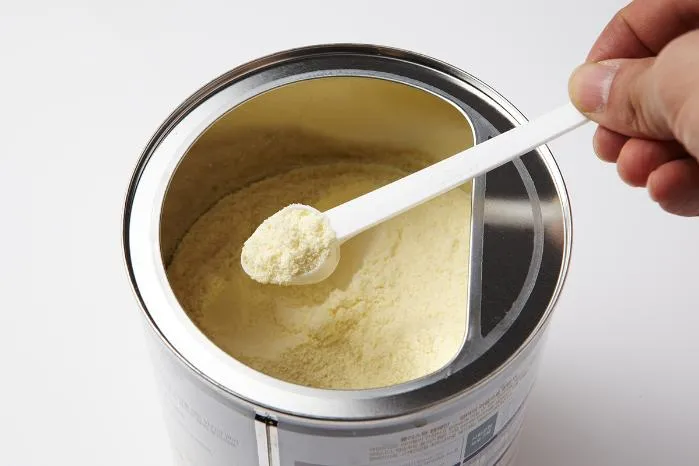
Image credit: National Institute of Korean Language. Used under CC 2.0 license.
According to Nature Reviews Gastroenterology and Hepatology, necrotizing enterocolitis is the "most frequent and lethal disease of the gastrointestinal tract of preterm infants".

Disrupting the Gut Microbiome
The concept of a gut microbiome has taken hold in the public consciousness. Yogurt and probiotics are widely consumed for the good of the microbiome. It might distress some in the probiotic-consuming public to know that indigestible food additives could be messing around with their microbiome. Of particular interest in this disruption is one microbe, R. gnavus.
In a healthy gut, mucus provides a protective barrier between the intestinal wall and bacteria. A breakdown in mucus would allow bacteria to penetrate the wall. This penetration could lead to all kinds of mischief, including inflammation.
Cross Section of Small Intestines
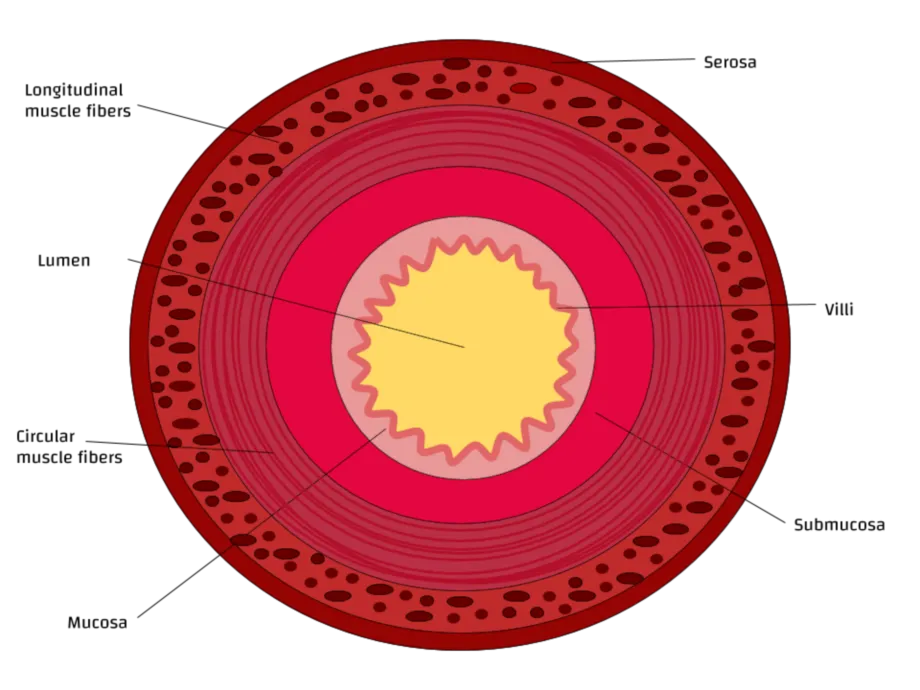
Up to 90% of all people have R.gnavus as part of their gut microbiome. R.gnavus has an appetite for mucin cells. Mucin produces mucus. Many studies have shown a strong correlation between elevated levels of R.gnavus in the gut and activation of inflammatory diseases--not just inflammatory diseases of the gut, but also systemic inflammatory diseases.
One of the systemic diseases associated with elevated levels of R.gnavus is SLE (lupus), especially if lupus nephritis is present. Other inflammatory conditions associated with R. gnavus are spondyloarthritis, and eczema in infants. Psoriatic arthritis is a form of spondyloarthritis.
Inflammation of the Spine From Psoriatic Arthritis
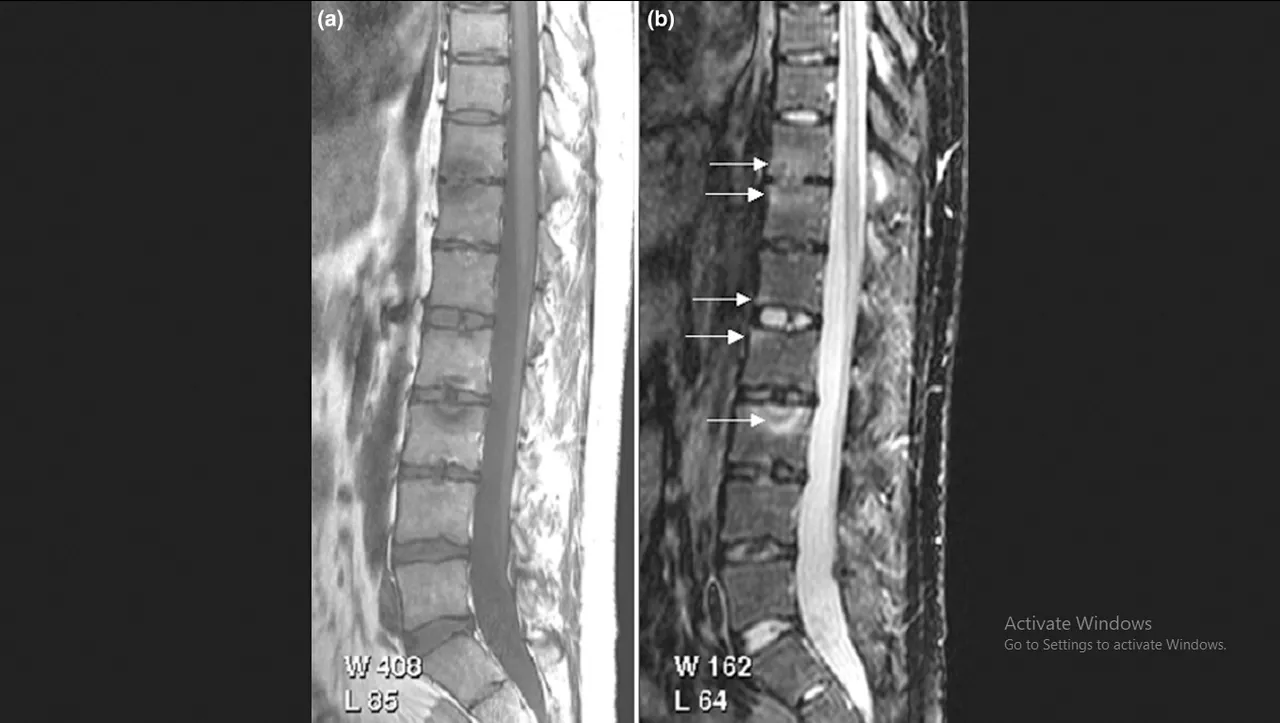
Image credit: Fjiona McQueen, Marissa Lassere and Mikkel Ostergaard. Used under a CC 2.0 license.
An association between IBD (inflammatory bowel disease) and elevated levels of R. gnavus has long been established.

Of Mice, Emulsifiers and Mucus
Experiments on mice show disruptions in the gut microbiome when common food additives are introduced into the diet/water of the animals.
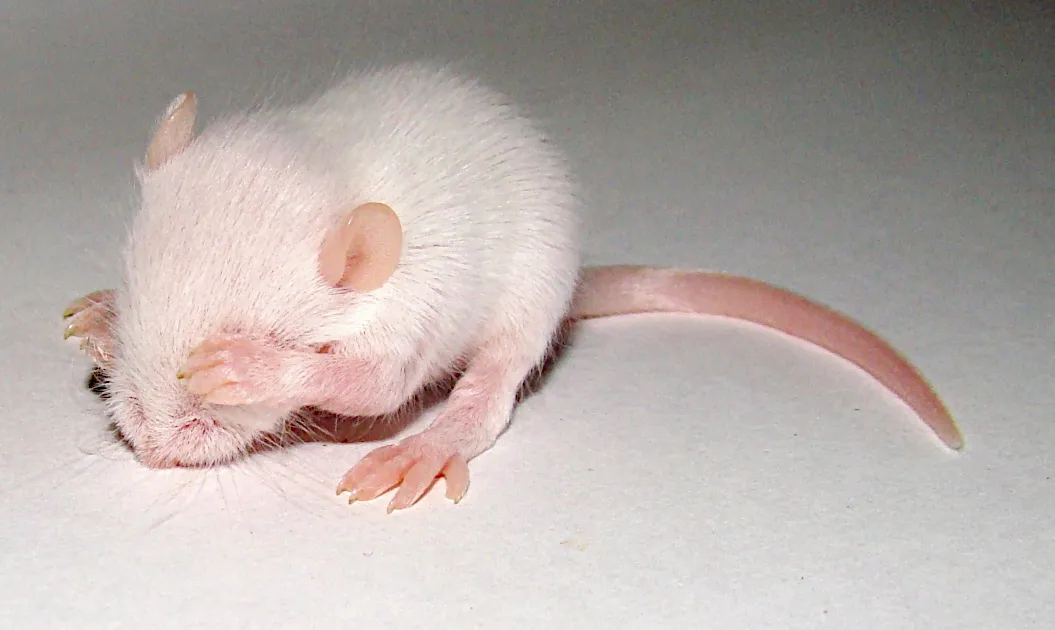
Image credit: Pogrebnoj Alexandroff. Public domain.
One experiment involved supplementing the mouse intake by 1% with polysorbate-80 (P80) and carboxymethylcellulose, two emulsifiers commonly added to human foods in the same proportion. The result: after 12 weeks, a decrease in intestinal mucus thickness and an increase in microbiota R.gnavus and A. muciniphila.
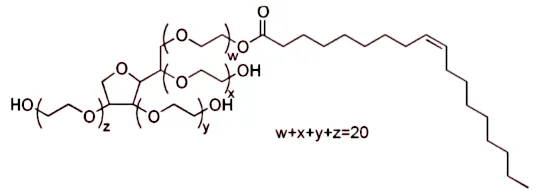
Polysorbate 80 formula, credited to Edgar181: Public domain
Another study, published in SOJ Microbiol Infect Dis, showed that with the administration of emulsifier polysorbate 80, "glycemic tolerance disorder occurred, blood insulin level increased, hepatic enzyme level enhanced, hepatic mitochondria and gall bladder increased". Also there was a decrease in intestinal mucus and in the integrity of the intestinal wall. The authors of this study conclude that "emulsifier agents such as polysorbate-80, may be contributing to obesity related intestinal inflammation and progression of liver dysfunction and alternation of gut microbiota."
Lecithin Formulations
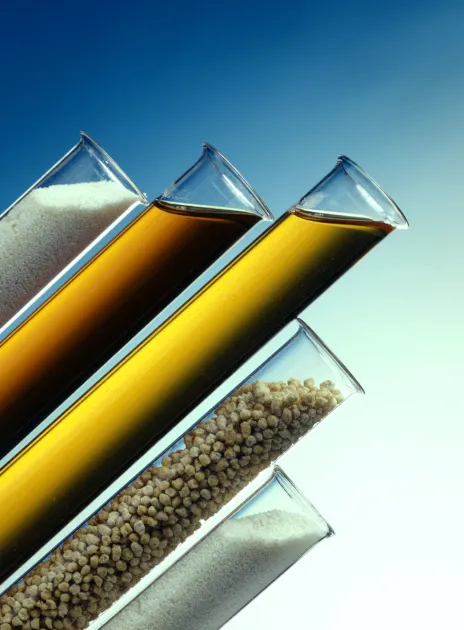
Image credit: Helge Höpfner. Used under a CC 3.0 license.
Finally, in a summary of human and mouse studies, an article published in Wiley Nutrition Bulletin, points to an association between "very low concentrations of the food emulsifier polysorbate 80" and "intestinal inflammation and metabolic syndrome". The article goes on to suggest that the effects of polysorbate 80 may be "generalisable across all emulsifiers and detergents, including perhaps the natural emulsifier lecithin". The implications of this research, according to the authors, extend to a wide range of conditions, including obesity, heart disease and various syndromes associated with what has come to be be known as the Western Diet.

Conclusion
Bagel with Cream Cheese and Salmon
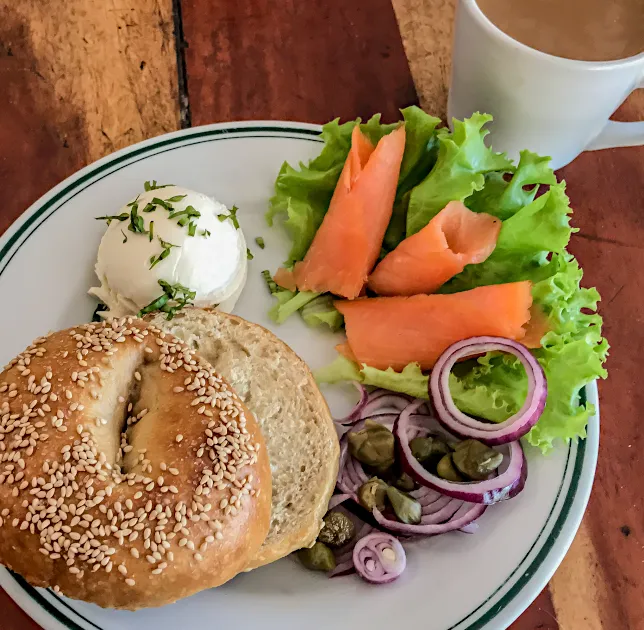
Image credit: Fran Hogan. Used under a CC 4.0 license.
Almost all commercially prepared cream cheese has an indigestible thickening agent added.
Indigestible food additives are almost ubiquitous in processed foods. Even the term 'organic' doesn't spare the consumer, because wood is natural and therefore may be organic.
Why are there two brands of ice cream in my freezer? Because, with COVID supply disruptions, Häagen-Dazs is in short supply. I cannot eat gums, and other thickeners. My husband does not have difficulty with them. He gets Breyers. I get Häagen-Dazs. In better times, we will both eat gum-free ice cream. (Don't be concerned about the caloric/fat content of this treat: the ice cream is mixed with four parts Fage plain, fat-free, yogurt...no additives).



Selected Sources Used in Writing the Blog
1.https://academic.oup.com/ajcn/article/81/2/341/4607411
2.https://www.ncbi.nlm.nih.gov/pmc/articles/PMC6899614/
3.https://www.ncbi.nlm.nih.gov/pmc/articles/PMC4944853/
4.https://www.ncbi.nlm.nih.gov/pmc/articles/PMC6027178/
5.https://www.researchgate.net/publication/321344055_A_novel_Ruminococcus_gnavus_clade_enriched_in_inflammatory_bowel_disease_patients
6.https://www.brighamandwomens.org/medicine/rheumatology-immunology-allergy/services/spondyloarthritis
7.https://www.ncbi.nlm.nih.gov/pmc/articles/PMC6801612/
8.https://www.tandfonline.com/doi/pdf/10.1080/19490976.2016.1186334
9.https://www.pnas.org/content/116/26/12672
10.https://www.uofmhealth.org/news/archive/201611/high-fiber-diet-keeps-gut-microbes-eating-colon%E2%80%99s-lining
11.https://www.ncbi.nlm.nih.gov/pmc/articles/PMC5124124/
12.https://www.nytimes.com/1990/07/29/us/cal-ban-diet-tablets-present-health-hazard-us-finds.html
13.https://pubmed.ncbi.nlm.nih.gov/1329494/
14.https://www.thespruceeats.com/what-is-cellulose-1328464)
15.https://celluloseether.com/carboxymethylcellulose-sodium-in-ice-cream/
16.https://efsa.onlinelibrary.wiley.com/doi/full/10.2903/j.efsa.2017.4863
17.https://www.nipponpapergroup.com/english/research/organize/cellulose.html
18.https://pubmed.ncbi.nlm.nih.gov/22289705/
19.https://www.healthline.com/health-news/gut-bacteria-linked-to-lupus#Bacteria-overgrowth-tied-to-lupus
20.https://www.researchgate.net/publication/276241813_Consumption_of_partially_hydrolysed_guar_gum_stimulates_Bifidobacteria_and_butyrateproducing_bacteria_in_the_human_large_intestine
21.https://www.frontiersin.org/articles/10.3389/fmicb.2018.02558/full
22.https://www.tandfonline.com/doi/abs/10.1080/10408398.2018.1542587?scroll=top&needAccess=true&journalCode=bfsn20
23.https://www.nature.com/articles/ncomms8624
24.https://pubmed.ncbi.nlm.nih.gov/21544654/
25.https://gtr.ukri.org/projects?ref=BB%2FP008895%2F1
26.https://www.frontiersin.org/articles/10.3389/fcimb.2020.00248/full
27.https://journals.plos.org/plosone/article?id=10.1371/journal.pone.0076341
28.https://www.biorxiv.org/content/10.1101/2020.06.28.174946v1.full
29.https://elmhurst1925.com/blogs/news/gums-thickeners-and-emulsifiers-in-food-are-they-really-bad
30.https://www.researchgate.net/publication/288874139_Dietary_Emulsifiers_The_Human_Intestinal_Mucus_and_Microbiome_and_Dietary_Fiber
31.https://www.sciencedirect.com/science/article/pii/S2452231719300144
32.https://www.ncbi.nlm.nih.gov/pmc/articles/PMC5410598/
33.https://www.science.gov/topicpages/c/carboxymethyl+guar+gum.html
34.https://www.thestreet.com/opinion/cellulose-wood-pulp-never-tasted-so-good-11012915
Illustrations not credited in the blog
Accent ice cream cone: Pixabay
Accent sponge: Pixabay
